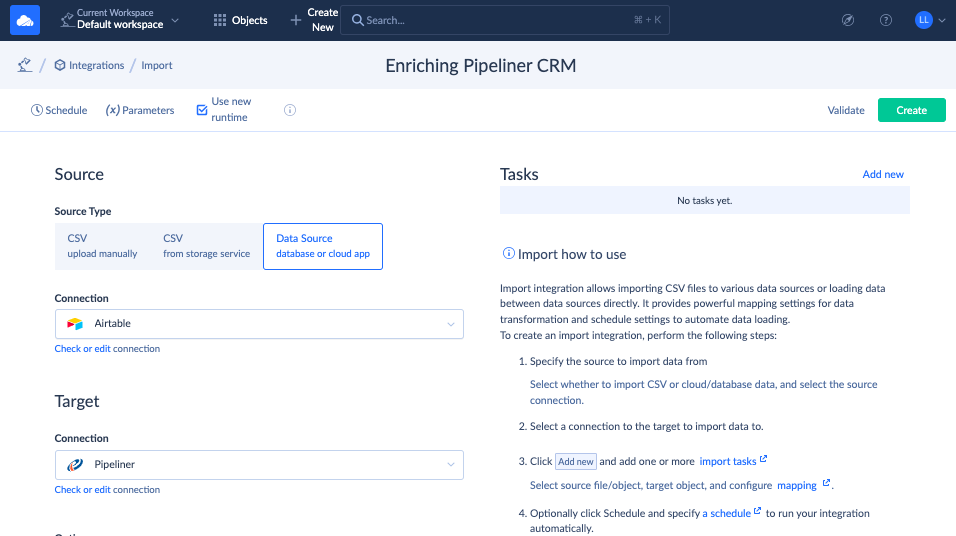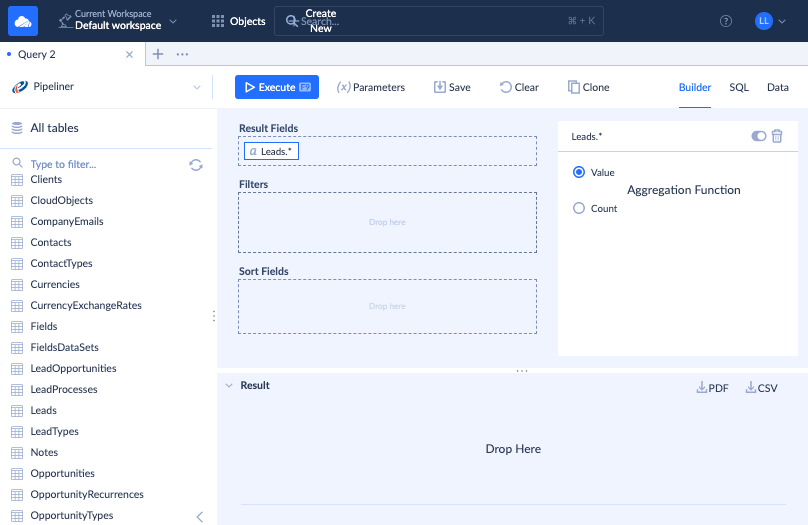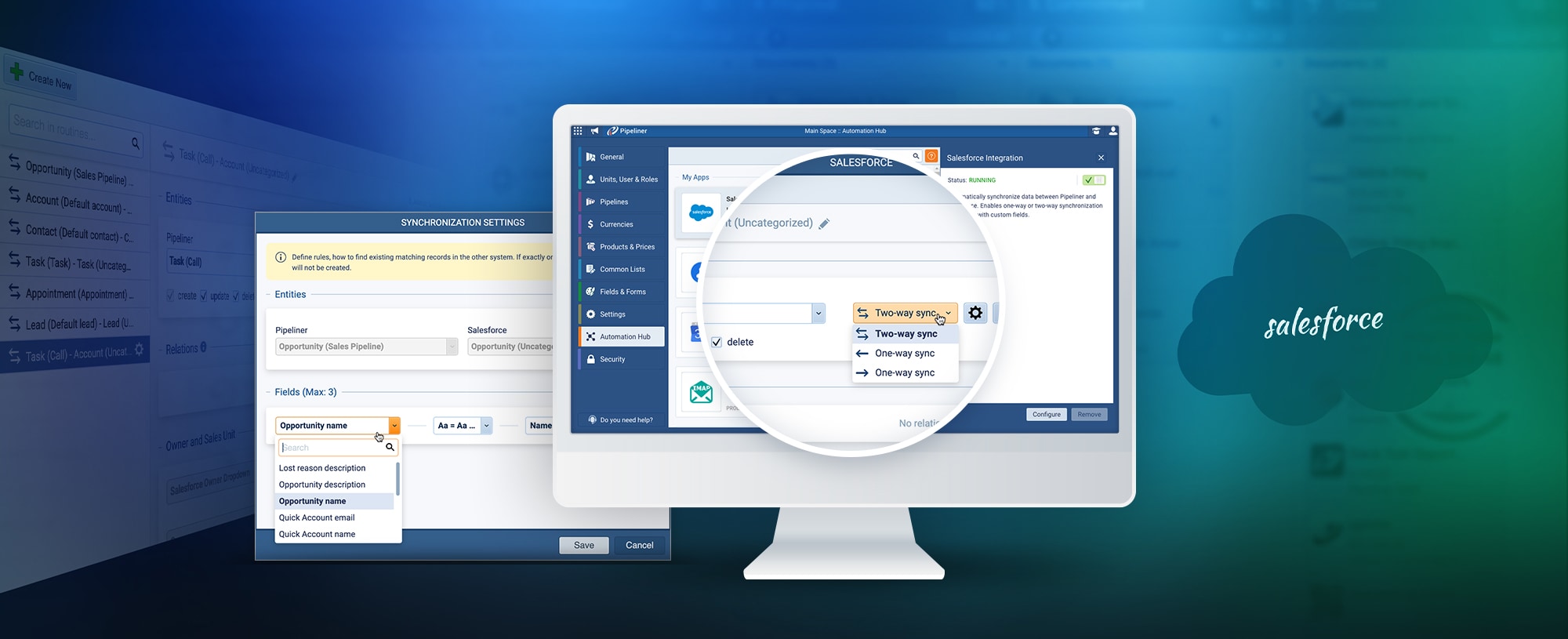Do you have a team of sales representatives, a huge base of prospective customers, and an excellent productProduct Product refers to anything (an idea, item, service, process or information) that meets a need or a desire and is offered to a market, usually but not always at a price., but the sales results aren’t going as expected? Many businesses encounter this kind of situation across industries.
It’s not about the product or the professionalism of your sales team; it’s more about the optimizationOptimization Optimization is the process or act of altering a system, design, or procedure such that it 1) attains full functionality or efficiency, or 2) generates maximum output, benefit, or impact. of sales processes. This article provides some hints on how you can improve your sales approaches and what tools can help you with that.
What is the sales processSales Process Sales Process is a series of strategic steps or a set of activities aimed at driving sales growth through the alignment of personnel, market insight, methodologies, relevant business units, and technology. lifecycle?
We usually imagine sales as a one-time event that occurs either in a physical location or an online store. However, many preparatory steps and behind-the-scenes operations precede the actual sales deal.
In the digital environment, a sales process lifecycle is known simply as a sales cycleSales Cycle Sales Cycle is a repeating process characterized by a predictable sequence of stages that a company undergoes as it sells its products and services to customers.. It implies a set of steps to take in order to find prospects and convert them into paying customers.
Here’s a breakdown of the common stages in the sales process lifecycle:
- Prospecting. Perform market research to develop your ideal customerCustomer Customer is an individual or an organization that purchases a product or signs up for a service offered by a business. profile and decide where you can find and reach them.
- Qualifying. Assess leads and think whether they make a good fit for you. To qualify your potential customers, you need to understand their current needs and how much money they are ready to spend.
- Product presentation. Companies usually offer demo sessions to present products to their leads. At this stage, potential buyers get acquainted with the value propositionValue Proposition Value Proposition is a statement or message that encapsulates the reasons — such as benefits and unique attributes — consumers would want to patronize a brand or purchase a product. and tailor it to their current needs.
- Pre-sale. When prospects are really interested in your product, they might ask additional questions before making an actual purchase.
- Closing the deal. When a buying decision is made, you need to be clear about further instructions on the product use and maintenance.
- Post-sales and customer retention. Building a progressive relationship with the customer is necessary for ensuring ongoing purchases and business referrals.
The specific stages and their order can vary depending on the industry, product complexity, and sales methodology used. However, such classification of sales funnelSales Funnel Sales Funnel is a visualization of the sales process that defines the stages through which prospective customers go through as they are led by sales professionals towards a purchasing decision. stages helps salespeople to organize their workflows properly and optimize the processes full of roadblocks.
Why is it necessary to improve sales processes?
Refining your sales process is necessary for several reasons. The first and most important one is standardizing all sales procedures. When every employee knows what and how to promote, it’s a good starting point.
Secondly, a well-structured sales process helps identify and nurture leads more effectively. This results in higher conversionConversion Conversion is the process of turning a target consumer into a paying customer; or more generally, the point at which a user performs a specific action favorable to a marketer or a seller. rates as prospects are more likely to move through the sales funnel when everything is clear.
Improved sales processes also result in better dataData Data is a set of quantitative and qualitative facts that can be used as reference or inputs for computations, analyses, descriptions, predictions, reasoning and planning. analyticsAnalytics Analytics is the active study of different types of data with the aim of discovering meaningful patterns and translating these into insight (such as historical analyses and forecasts), or action (such as those intended to improve business performance). and tracking. Businesses can derive customer behavior patterns, sales trends, and process bottlenecks.
Overall, improving sales processes helps businesses achieve more predictable and stable revenueRevenue Revenue is the amount of money a business generates during a specific period such as a year or a quarter; also called sales. streams. Deliberate sales efforts assist advanced forecastingForecasting Forecasting is a prediction or calculation of a trend or event likely to occur in the future based on qualitative, quantitative and historical data as well as emergent but relevant factors. and planning, which is crucial for sustained growth.
Strategies for sales optimization
It’s obvious that regular review and improvement of sales processes are inevitable for business growth. So, here, we’d like to present some of the effective strategies for optimizing your sales approaches.
1. Collect data
CRM systems are the most popular solutions, helping to collect all the necessary data about prospects and sales representatives’ actions. Keeping all these data in the same system is necessary for understanding your target audience.
You might think that small businesses in the manufacturing industry are your potential customers, but collecting and analyzing data about your prospects and sales deals might reveal that your target customers are mid-size companies in the logistics sector.
There are multiple CRM systems available in the market nowadays, but how to know which one is the best option for you? Note that Pipeliner CRM has everything necessary for managing and optimizing sales processes.
2. Develop your ideal customer profile
At this stage, you might need the help of the marketingMarketing Marketing is the field, set of actions, or practice of making a product or service desirable to a target consumer segment, with the ultimate aim of effecting a purchase. team and executives. They can extract the list of customers that bring the most profit and conclude which characteristics they have in common. This will help you to qualify the leads and concentrate on those that match the ideal customer profile.
3. Sales automationSales Automation Sales Automation is the act, practice or technique of using software to simplify, speed up or streamline the entire sales process or specific component activities such as customer tracking, forecasting, and inventory monitoring.
Innovative software can significantly help in streamlining and optimizing sales processes. For instance, you might want to get more information about your prospects, and CRM enrichment with Skyvia can help you a lot. Moreover, Skyvia can help you integrate data to your CRM from other company data sources to get a complete 360 overview of your leads and sales performance.
4. Shorten sales cycle
In some industries, the process of discussion and other pre-sales activities might take months. This might be determined by the complexity of the product. However, in most cases, there’s no need to overcomplicate the sales process and make it last for weeks. That’s why think of how to reduce the number of steps or improve communications. Get some ideas on how to simplify the sales process to make it more attractive for your customers.
5. Analyze everything
CRM is a gold mine that can serve you as a base for profound and detailed sales process analysis, becoming your single source of truth (SSOT). It’s possible to derive the average time to close a sales deal, the average cost for the prospect, the percentage of prospects to gain customers, and so on.
Data integration with Skyvia for sales optimization
Skyvia is a universal cloud platform designed for a wide range of data-related tasks. You can perform data integration, backup, workflow automation, OData endpoint creation, and data querying.
Let’s have a look at several examples of how you can benefit from using Skyvia together with Pipeliner CRM.
Enrich CRM Data
1. Log into your Skyvia account or create a new one.
2. Create the Pipeliner CRM connector.
3. Go to the +Create New -> Import in the top menu.
4. Select a CSV file or a cloud app/database as a source.
5. Select Pipedrive CRM as a target.

6. Click Add task to set up everything needed for smooth integration. This includes the objects you want to enrich your records with and detailed mapping settings.
7. Save the task.
8. Name and save the integration scenario.
9. Click Run to start enriching your CRM data right away.
Query Pipeliner CRM Data
- Log into your Skyvia account or create a new one.
- Go to the +Create New ->Query -> Builder in the top menu.
- Select the Pipeliner connector in the left panel.
- Drag the fields that you’d like to see in the query results and specify the filtering criteria.
- If you want to write SQL statements manually, switch to the SQL tab.
- Observe the results and download them in the preferred format.

Measuring the success of the new strategies
Assessing new sales strategies is not rocket science since you already rely on some metricsMetrics Metrics are quantities that are measured and used to: when evaluating your current strategies. The main thing here is that you stay consistent in the metrics used to measure the results before and after the new strategy implementation.
Here are some widely used metrics to measure success of the sales strategies:
- Sales conversion rates. It indicates the percentage of prospects that turned into paid customers. If this metric increases, it means that the optimized sales processes work well.
- Average sales cycle. It shows the average amount of days/weeks spent on the customer acquisition. The shorter the sales cycle is, the better.
- Average deal size. Measuring a new sales strategy is also important from the point of view of the company’s revenue. Even if conversion rates grow, though the deal size decreases, this might be a good reason to review your current sales strategy.
- Individual quotaQuota Quota is a predefined benchmark indicating the amount of sales a selling unit such as a sales rep or a regional sales team should achieve within a given period, often used as a measure of success, performance and eligibility for commissions and other rewards. attainment. This metric shows the performance of each sales representative. Obviously, the more deals a salesperson closes, the better. This means that the sales process was redesigned properly.
Summary
Even when a business is doing well, improving sales is inevitable. It helps present your brand on the market, gain prospective customers, and better understand the target audience.
In most cases, sales make up a considerable share of the company’s profit, so it’s necessary to constantly improve it to get stable revenue streams. For that, it’s highly recommended to install and use the CRM system, use automation tools, reduce the sales cycle, and perform an in-depth analysis of the given data.
Pipeliner CRM, together with Skyvia, can show outstanding results in improving and optimizing sales processes. You can enrich your CRM data to better understand your prospects and query Pipeliner data to extract the leadLead Lead refers to a prospect or potential customer (who can be an individual or organization) that exhibits interest in your service or product; or any additional information about such entity. groups corresponding to certain criteria.




